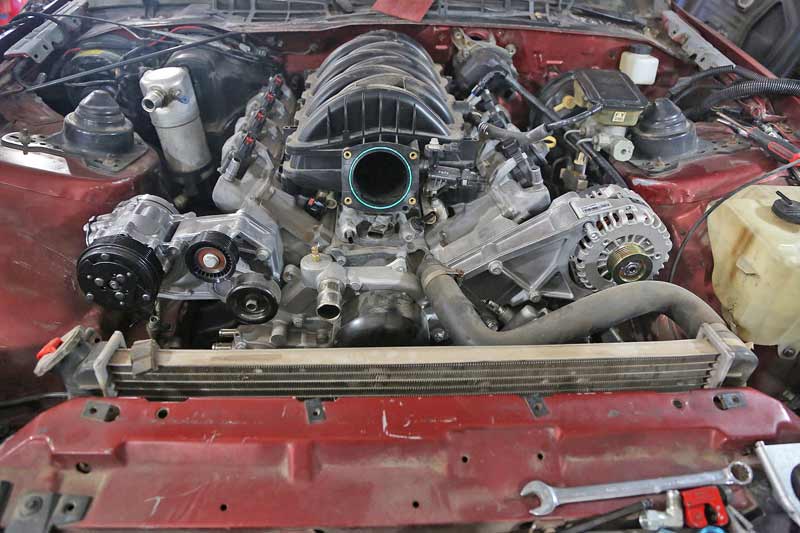How To Make A Custom Radiator Hose

A big part of DIY automotive work is non-standard applications. Whether it is an emergency repair, an engine swap, or a complete custom project, sometimes you just have to make what you need because it can’t be purchased off the shelf. One of the most frustrating parts of an engine project is the radiator hoses. Maybe you can find a hose that is close enough to fit, or cut up a couple of hoses to fit it all together, but usually the result look more like one of Dr. Frankenstein’s failed projects.
With less effort, you can build a custom radiator hose that not only holds that 200-degree coolant inside the system where it belongs, but also looks really good too. Most of the parts can be purchased at your local NAPA Auto Parts Store too, making the entire process convenient. The custom upper radiator hose in this article is a hardline hose, meaning that the bulk of the hose is a hard tube. This won’t work in every application, but most vehicles can use this style of hose with the right couplers.
To build a custom radiator hose, you need rubber or silicone elbows, aluminum tubing, and some hose clamps. Your local NAPA Auto Parts Store will have a selection of elbows, which are typically vehicle-specific, but you can shop the wall of hoses to find the parts you need. The couplers can be aluminum or nylon. One great way to tackle this project is with a hose repair kit, which has nylon (some kits are steel or aluminum) couplers and clamps.

The lower hose on this 1987 Camaro was fabricated using the hose repair kit. Using two long 1-3/4” elbows that were trimmed to fit together, the repair kit coupler was assembled and each hose was twisted so that it could connect to the water pump and radiator respectively. Once we had it positioned, the sectioned were secured using standard hose clamps.



The upper hose required a little more work. The factory upper hose almost reached, but it needed about eight more inches of horizontal length to reach the new engine’s water neck. We could have cut this hose and sectioned in more hose using the repair couplers, but that would be several clamps and connections, which is just more opportunity for a leak and it doesn’t look as nice.

Instead, we picked up a couple more elbows, both 90-degree, and attached them to the water neck and radiator. Then we measured the distance between the two ends, added about three inches for clamping space, which allows 1-1/2 inches inside each side of the hose.

Next, we cut a piece of thin-wall 1-3/4” aluminum tubing and inserted it in the elbows. Once we were happy with the clearances, we clamped it all together with more hose clamps.


These new hoses look good and will serve the engine for years to come. The great thing is that when the hoses eventually get weak, all we have to do is replace the bad section and we don’t have to try to remember what combination of hoses we used. As a side note, if you use a steel tube, make sure the inside is coated with an anti-rust coating. It will eventually rust, which is a bad thing and you don’t want all rust in your engine’s cooling system, so stainless steel, aluminum, or nylon tubing is best.
Check out all the belts and hoses available on NAPA Online or trust one of our 17,000 NAPA AutoCare locations for routine maintenance and repairs. For more information on how to make a custom radiator hose, chat with a knowledgeable expert at your local NAPA AUTO PARTS store.
Categories
Jefferson Bryant View All
A life-long gearhead, Jefferson Bryant spends more time in the shop than anywhere else. His career began in the car audio industry as a shop manager, eventually working his way into a position at Rockford Fosgate as a product designer. In 2003, he began writing tech articles for magazines, and has been working as an automotive journalist ever since. His work has been featured in Car Craft, Hot Rod, Rod & Custom, Truckin’, Mopar Muscle, and many more. Jefferson has also written 4 books and produced countless videos. Jefferson operates Red Dirt Rodz, his personal garage studio, where all of his magazine articles and tech videos are produced.
